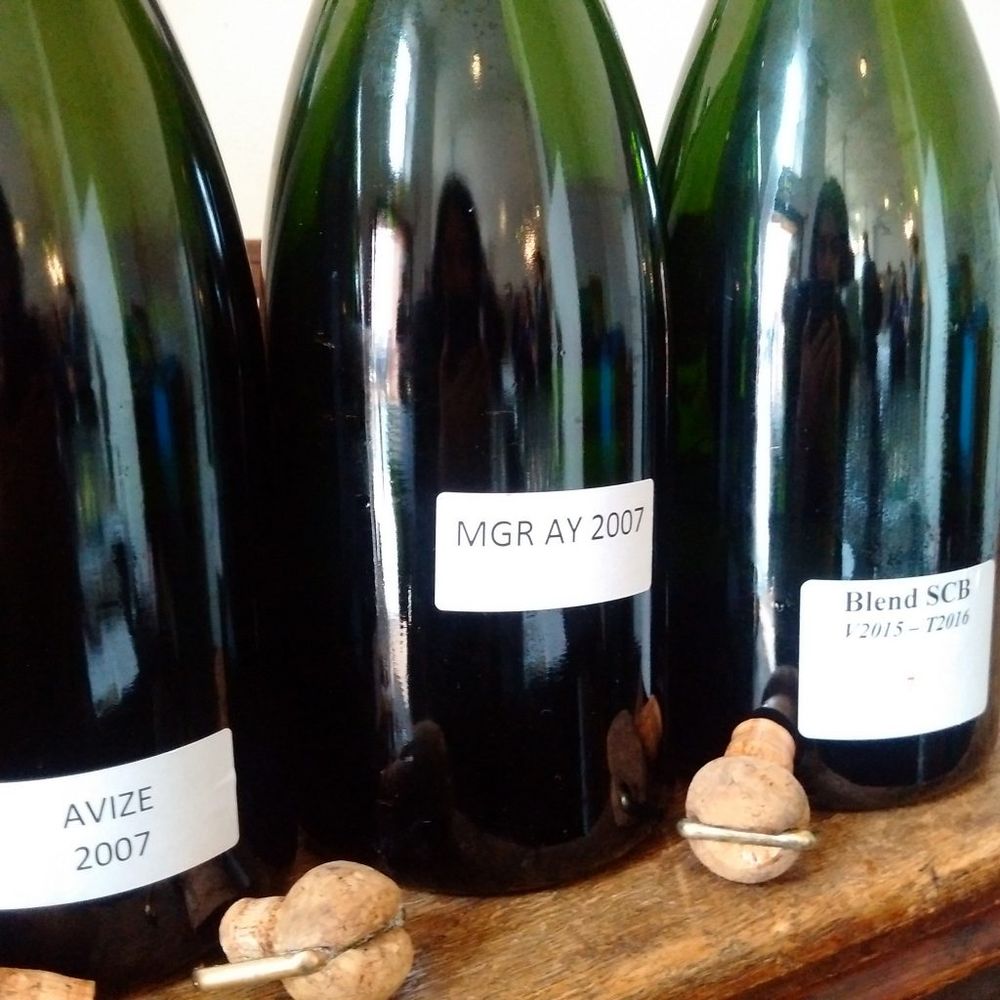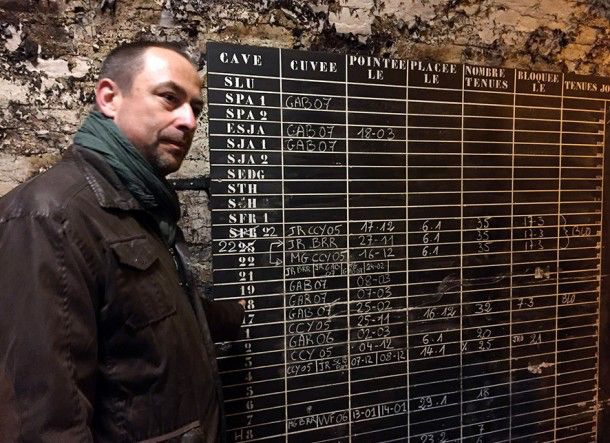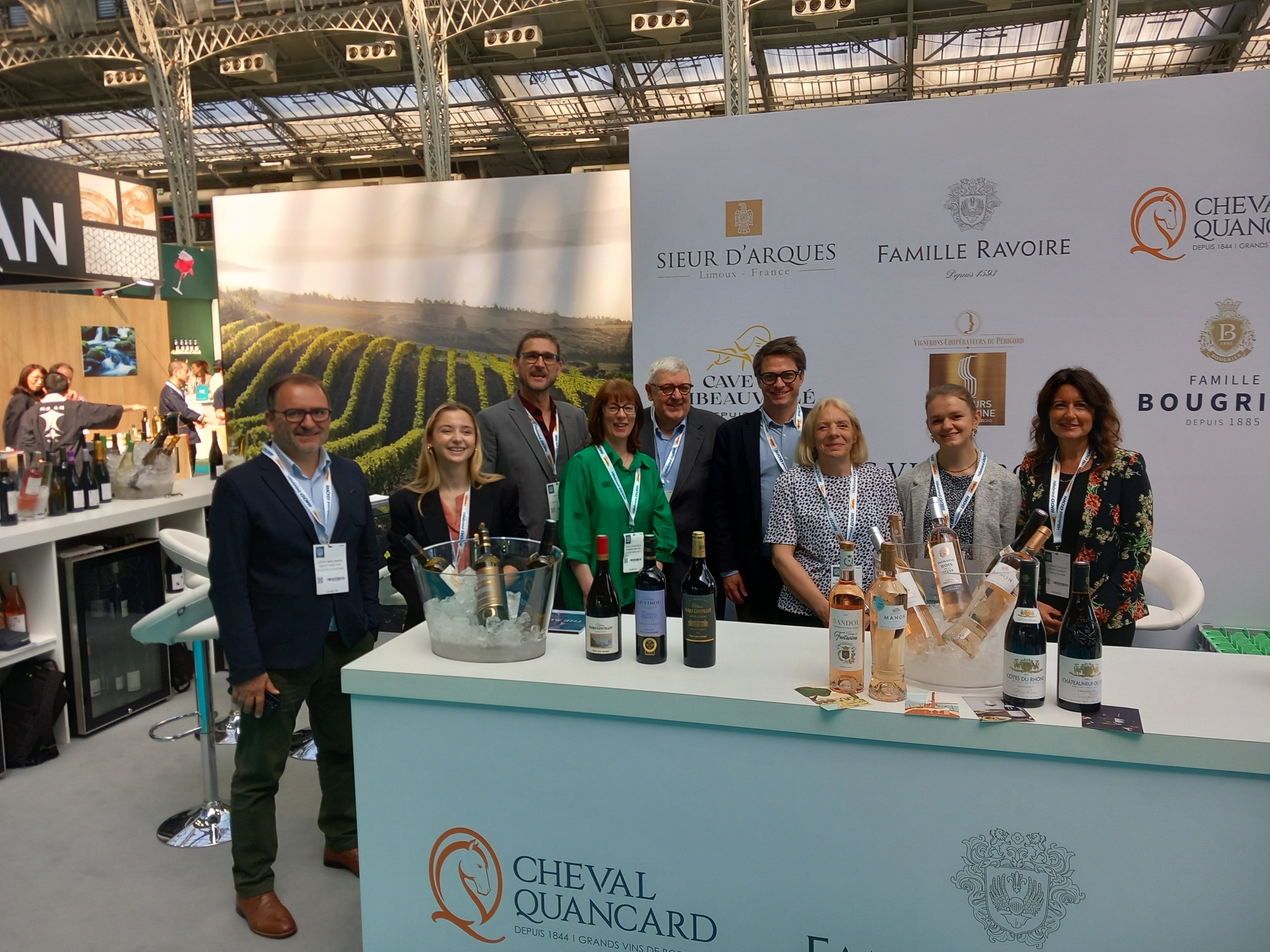Anne Krebiehl MW discovers the special quality of the Bollinger Special Cuvée is down to Bollinger’s five pillars of winemaking
What makes Bollinger Special Cuvée so special? Chef de cave Gilles Descôtes was in London specifically to answer this question. The cuvée, created especially for the English market* as a multi-vintage wine in 1911, when most Champagne was still predominantly vintage-dated, is known for its rich, rounded but fresh taste.
That this very consistent richness and depth of flavour is down to the use of reserve wines is well-known, what we learn now is that these reserve wines are treated in a rather special fashion: it’s all about ‘les magnums de réserve’.

Some background first: Descôtes explained the “five pillars” of Bollinger’s winemaking and the “three elements” of Bollinger’s taste. The pillars are
- Vineyard: while only 10% of Champagne’s vineyards is owned by big houses, Bollinger owns 167ha of vineyards and can thus cover 60% of their needs from their own vineyards over which they have total control.
- Pinot Noir: all Bollinger blends are based on a minimum of 60% Pinot Noir.
- Barrels: Bollinger owns 3,500 barrels and ferments wine in them every year – that amounts to the equivalent of about 1 million bottles.
- Reserve Wines: there are 750,000 magnums of reserve stored village by village (of origin) and vintage by vintage, as well as reserves stored in stainless steel vats.
- Time: Bollinger Champagnes are aged for at least 6 years – “an important commitment”, Descôtes points out.
The three elements of taste are:
- Fruit: Descôtes explains that Bollinger should taste of fruit in all its stages: of the freshest fruit from the previous harvest, of ripe fruit from the reserve wines stored in vat and of dried fruit from the very special ‘magnums de réserve’. This creates three layers of fruit present in every bottle.
- Vinosity: Descôtes apologised for using this rather nebulous term but explained that he means the combination of Pinot Noir’s structure and depth and Chardonnay’s subtlety.
- Creamy Effervescence: This is the point at which Descôtes began to speak about the ‘magnums de réserve’ since its creamy mousse really does set Bollinger Special Cuvée apart.
Descôtes had brought vins clairs (base wines) from the 2015 harvest and stainless-steel stored reserve wines from the 2014 vintage: these exemplified their varietal character and illustrated the difference between Chardonnay’s subtlety and Pinot Noir’s depth and structure.

Magnus de Réserve
Descôtes then moved on to the real revelation: Three ‘magnums de réserve’: the secret behind the creamy texture and flavourful depth of the Special Cuvée.
Descôtes explained that the house of Bollinger actually kept special reserve wines in magnum: they are only Chardonnay and Pinot Noir, they are either from premier or grand cru vineyards, they are barrel-fermented and barrel-matured from October to April, undergo malo-lactic fermentation and are then put into magnum under cork with a tiny amount of sugar and yeast for a first ‘prise de mousse’, a first fermentation in bottle that creates just 2 bars of pressure (fully sparkling Champagne has between 5-6 bars of pressure).
Of course this already creates the crucial autolytic interaction between the wine and the yeast from that initial, small secondary fermentation.
These precious, slightly sparkling but incredibly rich ‘magnum de réserve’ wines then make up usually 5% of the Special Cuvée: when the base wines for the special Special Cuvée are blended, these ‘magnum de réserve’ wines are disgorged and added with their lees to the blend which is then filtered before bottling when the second, full-strength bottle fermentation is induced that will take the Special Cuvée bottles to their fully sparkling state.
This addition of precious, oak-aged, already creamy, already slightly autolytic reserve wines is that small but crucial difference that sets the Special Cuvée apart.

Chef de cave Gilles Descôtes presents the masterclass
The third element, that creamy effervescence he mentioned, is thus down to triple lees contact: first during barrel ageing of the base wine, second during the initial autolysis in magnum and third through the autolysis during tirage. Of course, this leaves Descôtes with many blending decisions and the ability to combine in order to achieve that particular Special Cuvée taste: “The base wines from the (warm, even hot) 2003 were rich and round,” he said, “so the sharp magnum de réserve from 1996 was perfect.”
Descôtes and his colleagues bottled 70,000 magnum de réserve from the 2015 vintage. They also decided on the latest Special Cuvée blend which is to be released in 2019 or 2020: 45% of wines from the 2015 vintage, 50% of vat-stored reserves from the years 2014/13/12 and 5% of magnums de réserve from the 2008/07/06 vintages.
The currently released Special Cuvée blend – an epitome of creamy freshness, especially from Jéroboam to which we were treated – is made of 60% Pinot Noir, 23% Chardonnay, 15% Pinot Meunier and was bottled in early 2013 with 45% base wines from 2012, 45% reserves from 2010 and 2011 and 5% magnums de réserve from the 1990s and 2000s.
The masterclass took place on May 19 2016 at the Royal Geographical Society in Kensington.
*Hence the English ‘Special’ Cuvée rather than the French ‘Cuvée Spéciale’










































